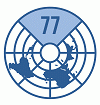At the outset the Group of G77 and China would like to note that the comments expressed today reflect the preliminary thoughts of the Group on the on the UNCTs and the RC system.
New Generation of UN Country Teams
A. UNCT Roles and Responsibilities in the SDG Era:
1) The Group believes there is a need to emphasize the response of UNCTs to country needs, priorities and context, and to national ownership and leadership.
2) We also believe that part of the conceptual paradigm shift referred to in para. 33, should comprise the adequate means of implementation necessary to implement national priorities. Likewise, the notion of a fast-track to SDGs from the focus on MDGs, would also be useful. We also call on the UNDS to prioritize economic structural transformation in the programming and work of the UN Country Teams. In this context, it would be important to have clarity on how UNDS will enhance its capacity, address gaps in SDG coverage and support implementation of all SDGs.
3) In para. 34, there is an acknowledgment of the focus being on the most vulnerable, with a listing of such countries. However, this listing does not follow the mandate in OP 10 of the 2016 QCPR resolution. Reference to countries in conflict and post-conflict situations and countries and peoples under foreign occupation was omitted from paragraph "34".
4) Similarly, how will the UNCTs focus on the most vulnerable?
5) What are the different forms of engagement with high-income countries? It is also to be noted that the 2016 QCPR resolution does not refer to this category, and its use here, rather than just a reference to developing countries, might create confusion.
6) The Group would request more clarity on what a demand-driven model is, and how it will function? Also, what are "more creative models of physical presence and common services?"
7) What are the different forms of engagement with middle-income and high-income countries and how these will address their particular needs and realities, further considering that the 2016 QCPR does not exactly refer to the second category?
B. Revisiting the UNDAF:
1) An important question is what will happen to current/ongoing UNDAFs? Will they be updated and brought in line to the new proposed model in para. 36?
2) The Group would also like to seek further elaboration on how multi-year Humanitarian Response Plans should be harmonized with UNDAFs?
C. Rethinking Configuration of the UN Development System in Country:
1) The Group believes that it would be important to get a sense of the extent of entity relocation, to get a feel of the extent of change proposed.
2) What is the exact role and capacity of the host country government in making the decision of maintaining an entity presence, or not?
3) Group believes that the UNDAF and similar documents should be the determining yardstick for country presence.
4) Caution should be exercised that quantitative measures on the feasibility of establishing country presence as a function of the ratio of overhead costs must not disadvantage LDCs, for example.
5) Moreover, it is the expectation of the Group that the UNDS should be able to be present in every developing country to address its development needs.
6) Will there be a risk that smaller agencies, that will be closing in numerous locations, would risk having their work or expertise subsumed, and/or taken over by the larger entities? Likewise, will these smaller agencies that will end up with a smaller field presence risk their ability to seek donor funding?
7) How will the situation be with regard to the specific situation of multi-country offices?
- With country offices on the ground and the RC out of an MCO, where would the decision to approve projects be taken?
- Is there an expectation that country offices would be staffed by people with more seniority and insight into UN processes than is currently the case?
- Are there plans to fund travel from MCO's to the countries covered by the office?
D. Common Business Services and Back-Office Functions:
1) We would request an estimate of the possible cost-saving of the new design.
